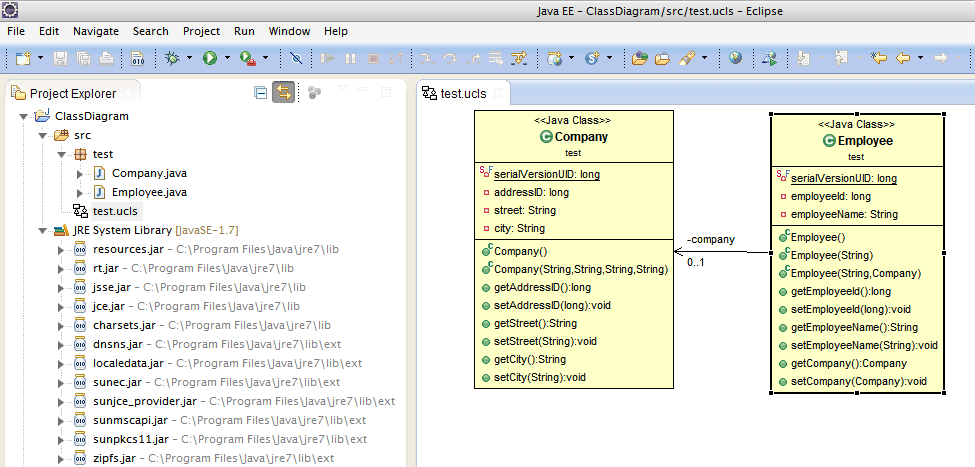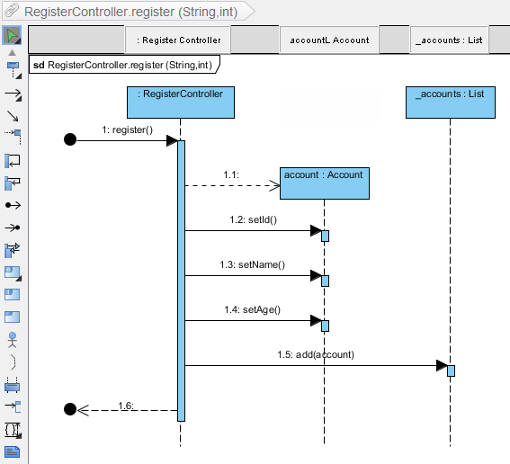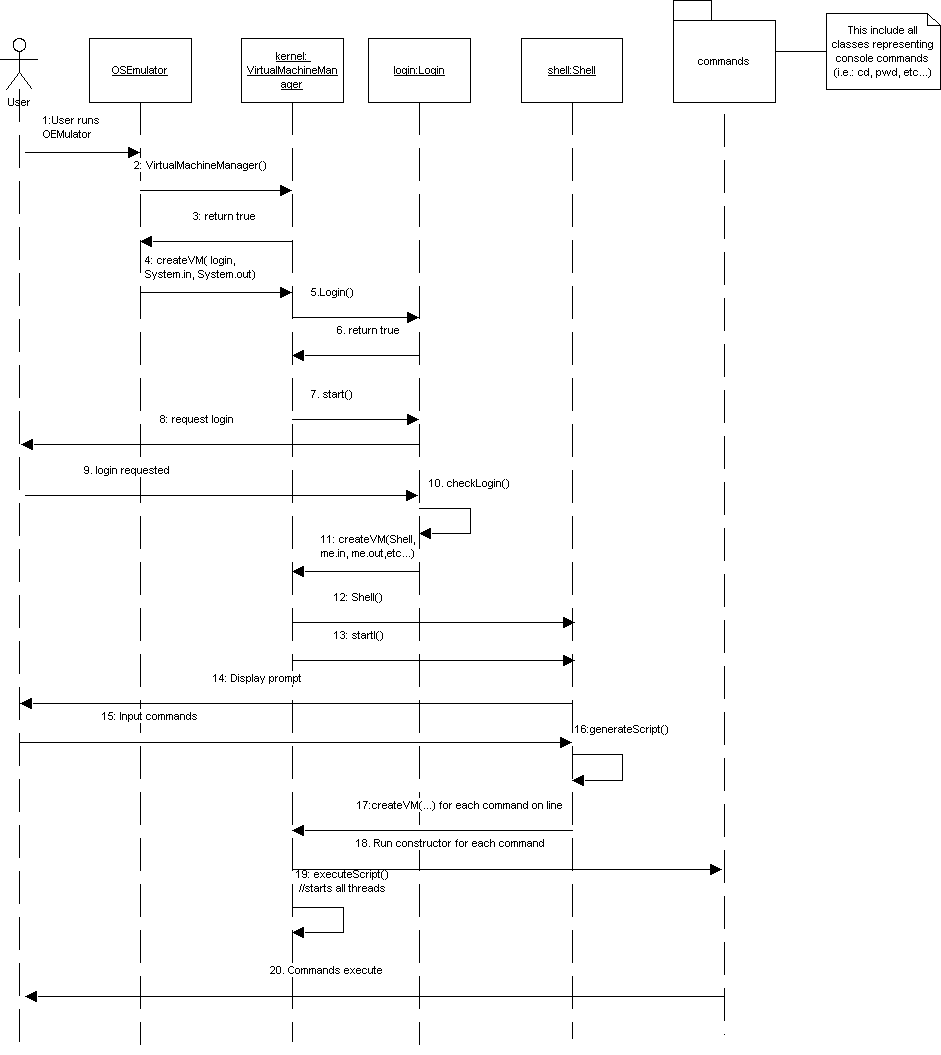

In Figure 3, a switch in TogetherControlCenter's 2 options panel displaysthe class name underneath the object name instead of alongside, reducing theamount of horizontal space required for each object. Larger sequence diagrams can become too wide to display comfortably on ascreen. Figure 3 showsthe loopback notation used to indicate that an object is calling method onitself. The complete() method calls twoother methods of the Sale class: calcTotal() and calcPayments(). This time, we have numbered the messages. More Notationįigure 3 shows a sequence diagram for the complete() method of the Saleclass. Third, the calling objectmay create a new instance of the target object. Second, the calling object may be passed a reference to thetarget object as a parameter of the invoked method. In this case, this knowledge is usually shown as an association in aclass diagram. First, an object'sstatic or instance variables may contain either a reference to the targetobject, or a name or identifier through which the object might be located via alookup service of some description (for example, JNDI, Factory class, databasequery). In Java, there are three fundamental waysan object may know of the existence of another object. When sketching a sequence diagram to explore the problem domain, explicitlyprove a class diagram can support a sequence of method invocations that achievea required goal, or as part of the low-level design of a functional requirement,a common mistake that must be avoided is to invoke a method on an object thatthe caller has no direct knowledge of. Sequence diagrams are also often used to help analyze requirements ordocument the design of a feature in a process such as Feature-Driven Development(FDD) 1 Objects that I Know

#JAVA SEQUENCE DIAGRAM GENERATOR SOFTWARE#
Reverse engineeringsequence diagrams from existing source code can help developers new to the codeunderstand how it works, and can help developers communicate to clientrepresentatives the way the software works in a form less threatening thansource code. An examplecan be seen in the call from the Sale class to the LineItem class objects in Figure 2.Īs with UML class diagrams, what would normally require the inspection ofmultiple source code files is summarized in one UML diagram. Where iteration over a collection of objects is needed, an asterisk precedesthe method name with an optional condition inside square brackets. Optionally, returns from methods may be shown as a dotted line with an openarrowhead (for example, the return arrow from :Sale to Sender in Figure 2) whereit makes things clearer to do so.

These activation bars may be nested to show thatanother method of the object has been invoked as part of the execution of theprevious method the getQuantity() method in Figure 2 is an example of this. An object's lifeline is widened whenever one of itsmethods is being executed. Method invocations are drawn as solid lines with openarrowheads from the lifeline of the calling object to the lifeline of thereceiving object. Time is imagined as running vertically from top to bottom of the diagram.Each object has a lifeline running vertically down the page, immediatelybelow its rectangle. If the object name is omitted, the colonmust be retained. Either the object name(for example, :Sale in Figure 2) or class name (for example, Sender in Figure 2)may be omitted, but obviously not both. The whole name isunderlined (for example, aProduct:Product in Figure 2). They are displayed using theusual UML notation for an object the same shape or symbol used for the class ofthe object (a rectangle by default) with the name of the object followed by acolon, and the name of the class that defines that object. Objects that participate in the sequence and exist at the start of thesequence are spread across the top of the diagram. More detailed sequence diagrams show method arguments and return types. To get a better overall feel for the sequence, only the method names areshown. ** * From the Sale class: * calculates the total of the sale from the lineItem subtotals * total of the sale */ public double calcTotal() Sequencediagrams are essentially about the implementation of operations, so I have usedthe term method throughout this article (occasionally resorting to theterm message when describing a particular UML diagram).įigure 2 A sequence diagram for calculating the total of a sale. In sequencediagrams, the invoking of an operation is called sending a message. In theJava world, it is usual to use term method in both contexts. The term method isreserved for the code that provides the implementation of an operation. UML defines an operation as the signature of a method.


 0 kommentar(er)
0 kommentar(er)
